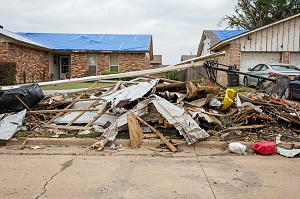
Protecting Your Car from Severe Weather Damage
During the spring, warming fronts might contain strong thunderstorms. The most severe weather has the potential to do severe damage to your property. As weather threats increase, protecting your possessions should be a priority. One thing you should not neglect is your car.

Vehicles have near-direct exposure to any type of weather that strikes them. Though very durable, cars cannot withstand severe weather more than your other property. So, when weather threatens, do what you can to protect your vehicle. You might avoid a lot of damage with just a few protective measures.
Protecting Your Car During Severe Weather
When you have time to prepare for severe weather, take a few minutes to look around your property. Is there anything you can do to make your car safer?
- Move the car into your garage or carport if you have one.
- If you park under trees or near bushes, leave the vehicle there at your own risk. Should limbs fall during storms, they might fall on and damage the car.
- Consider investing in a weather-resistant vehicle cover. This device might help protect the vehicle from falling objects or hail damage.
- Ensure you roll up the windows on the vehicle. You don’t want rain or other debris damaging the interior. Many people forget to check their windows, and the damage might prove costly.
- Check your lights and tires. The lights should not flicker. Tires should have strong treads, pressure and balances. Should you get caught driving in severe weather, these systems can help you maintain control and visibility.
- If you ever have to drive in severe weather, do so cautiously. Slow down, stay in your lane and use your lights as needed. In the most severe circumstances, many drivers pull over and wait for the worst of the weather to pass. If you decide to do so, pull into a parking lot or far off the side of the highway. Engage your emergency flashers to let others see you.
In the event that your car sustains damage in severe weather, your auto insurance might be able to help. If you have comprehensive coverage, you can likely get protection from weather damage. Let’s say a severe storm causes substantial hail damage to your exterior. With the right comprehensive coverage, you can get the money to help pay for this damage.
So, if a severe storm damages your vehicle, contact your insurer. They can likely help you understand how much protection you have for this damage. If you need to add comprehensive coverage to your policy, one of our agents will gladly assist you.
Categories: Blog
Tags: auto insurance
